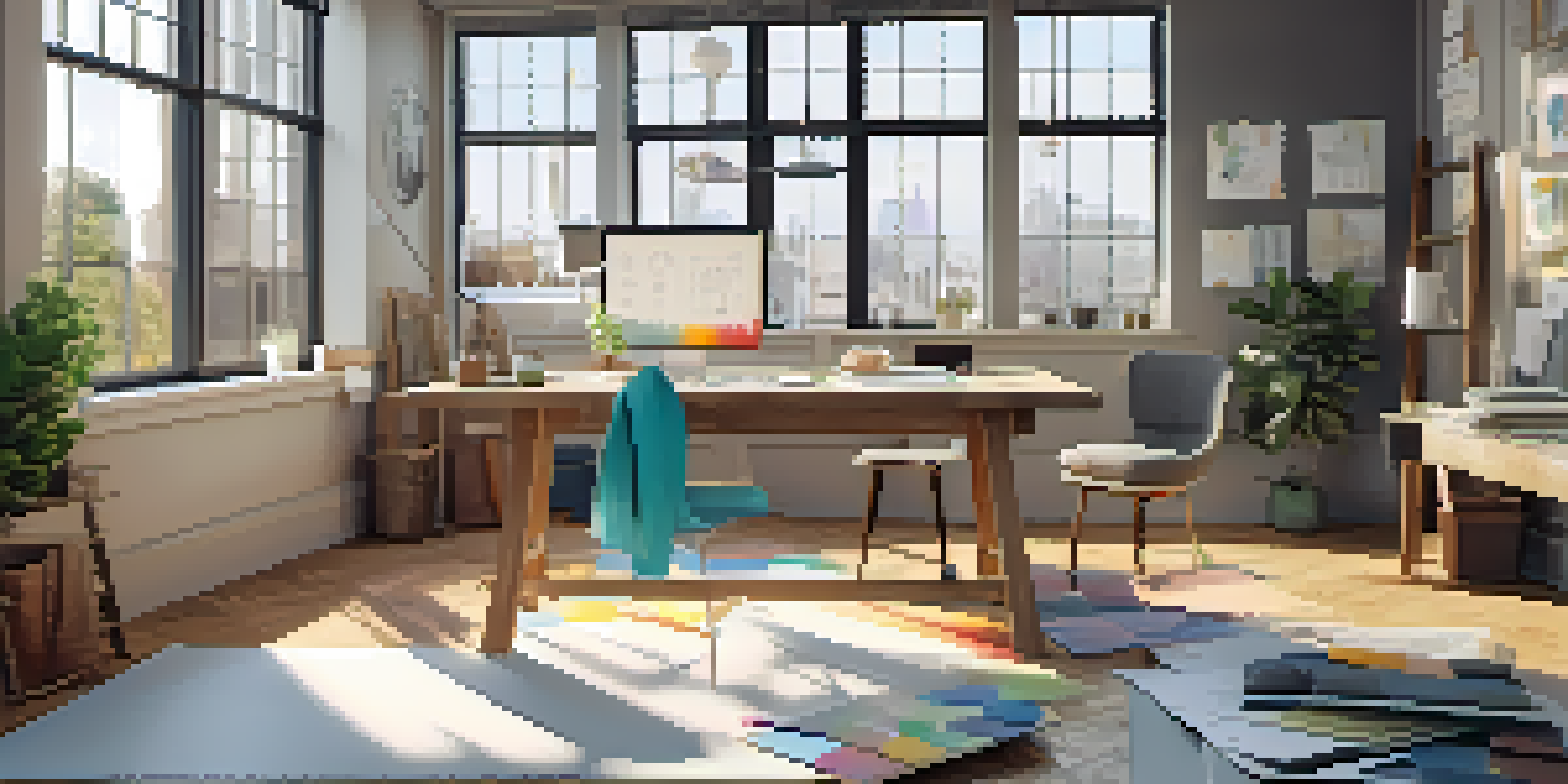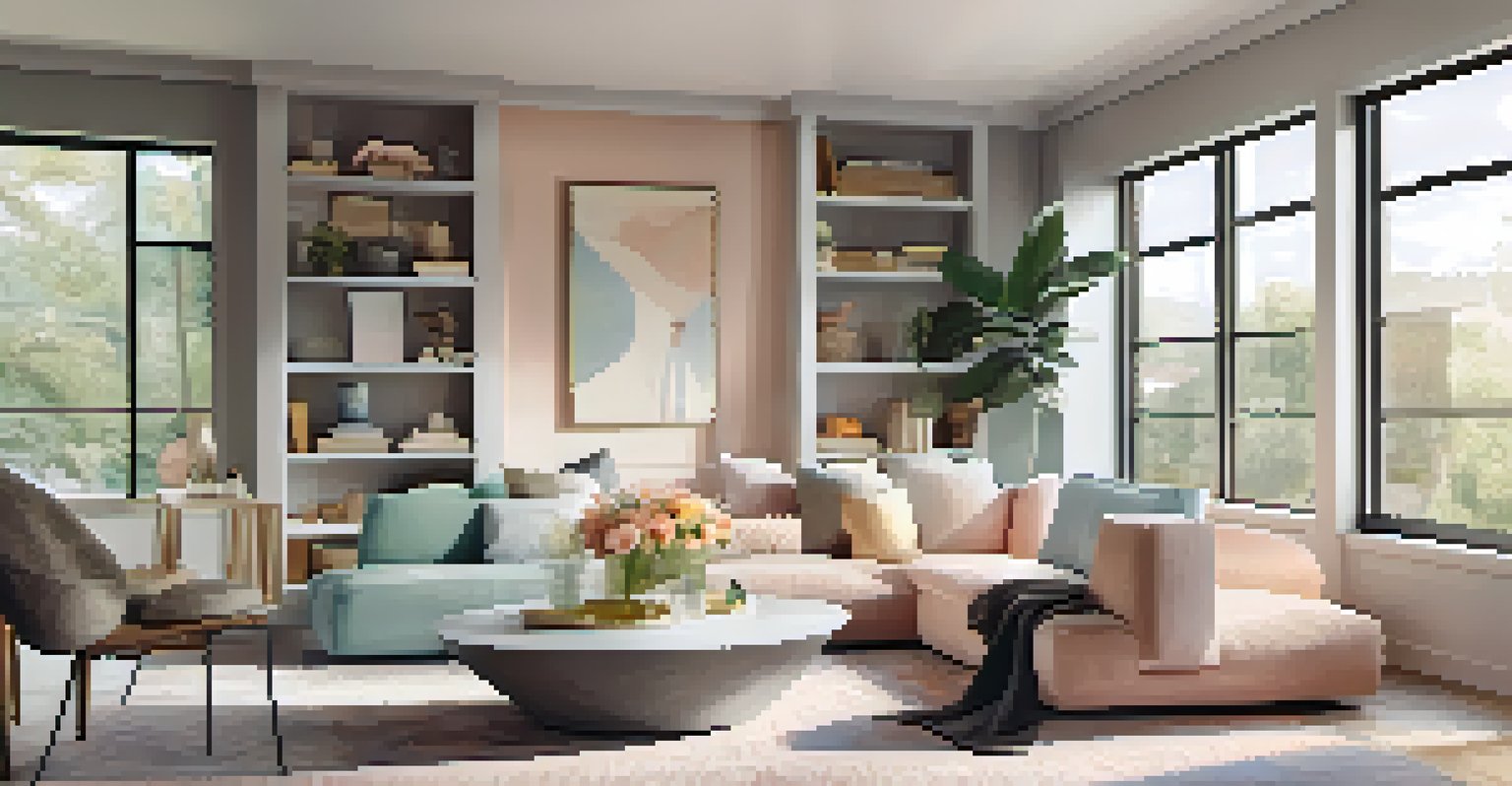Visualizing Your Flip: Importance of Design Planning

Understanding the Basics of Design Planning
Design planning is the roadmap for any successful property flip. It involves outlining how the space will look and function after renovations. This planning phase is crucial because it helps you avoid costly mistakes and ensures that your vision aligns with market expectations.
Design is not just what it looks like and feels like. Design is how it works.
Think of it like preparing for a road trip. You wouldn't just hop in the car without a route; similarly, a design plan guides your project from start to finish. It gives you a clear idea of what materials to use, the layout to follow, and the overall aesthetic you want to achieve.
Without a solid design plan, you risk making impulsive decisions that could derail your project. A structured approach not only saves time and money but also boosts your confidence as you tackle each step of the renovation.
Why Visualizing Your Flip Is Essential
When you visualize your flip, you're essentially creating a mental picture of the final product. This visualization helps in making informed decisions about colors, textures, and layouts. Imagine trying to choose paint colors without knowing how they'll look on the walls; it can be overwhelming.

By visualizing, you can experiment with different styles and concepts before committing to any changes. This might involve using design software or simple sketches to see how elements come together. It’s like having a dress rehearsal before the big performance; you ensure everything looks good before the final reveal.
Importance of Design Planning
A solid design plan serves as a roadmap for renovations, helping to avoid costly mistakes and ensuring a cohesive vision.
Moreover, visualizing helps you communicate your ideas effectively with contractors and suppliers. When everyone is on the same page, it minimizes misunderstandings and streamlines the renovation process, leading to a more cohesive end result.
Setting a Budget with Design in Mind
Budgeting is a vital aspect of design planning, as it dictates what you can realistically achieve. By establishing a budget early on, you can prioritize your design choices and avoid overspending on less important elements. Think of your budget as the foundation of a house; without it, everything else might crumble.
Good design is obvious. Great design is transparent.
It's helpful to break down your budget into categories, such as materials, labor, and design features. This way, you can see where your money is going and make necessary adjustments. For instance, if you splurge on high-end countertops, you might need to scale back on flooring choices.
Staying within budget not only keeps your project financially viable but also ensures that you invest in features that will increase your property's value. A well-planned budget allows for creativity while maintaining financial discipline.
Creating a Layout That Works
The layout of your flip plays a crucial role in its success. A well-thought-out floor plan enhances functionality and flow, making the space more inviting for potential buyers. Picture a cramped space with poor traffic flow; it can deter even the most interested buyer.
When planning your layout, consider the needs and preferences of your target market. For instance, an open-concept design is popular among families, while a more traditional layout might appeal to older buyers. Knowing your audience can help you tailor your design effectively.
Budgeting for Design Success
Establishing a budget early on helps prioritize design choices and maintains financial discipline throughout the renovation.
Utilizing tools like floor plan software can simplify this process, allowing you to visualize how different layouts impact the overall feel of the space. A functional layout not only improves livability but can significantly increase the property's market appeal.
Choosing the Right Materials and Finishes
Selecting materials and finishes is a crucial aspect of design planning that impacts both aesthetics and durability. High-quality materials can elevate the overall look of your flip while ensuring it stands the test of time. Consider how a beautiful hardwood floor can transform a room compared to standard laminate.
It's also essential to strike a balance between cost and quality. A budget-friendly option might save money upfront but could lead to more expenses in repairs or replacements later on. Investing in the right materials can pay off in the long run by enhancing the property’s value.
Additionally, trends play a role in material selection. Staying updated on popular finishes, like matte black fixtures or eco-friendly options, can make your flip more appealing to buyers. A thoughtful selection process not only beautifies your space but also aligns with market demands.
The Power of Color in Design Planning
Color is a powerful tool in design planning that can influence mood and perception. Choosing the right color palette can make a space feel larger, cozier, or more inviting. Imagine stepping into a room painted in soft pastels versus one in dark, moody tones; the impact is immediate and profound.
It’s important to consider the psychological effects of colors when planning your design. For instance, blues and greens are calming, while yellows can energize a space. By understanding these effects, you can create an environment that resonates with potential buyers.
Visualizing Layout and Materials
Visualizing your design and carefully selecting materials enhances both functionality and market appeal of the property.
Moreover, a cohesive color scheme throughout the property enhances visual flow and appeals to buyers' aesthetics. A well-planned color palette can be the finishing touch that brings your entire design concept together, making it feel polished and inviting.
Finalizing Your Design Plan and Next Steps
Once you’ve laid out your design plan, it's time to finalize and prepare for execution. This means reviewing all your choices, ensuring they align with your vision and budget. It's like putting the last pieces of a puzzle together; everything should fit seamlessly.
Before diving into the renovation, consider creating a timeline to guide the process. This helps in scheduling contractors and managing expectations. A structured timeline can alleviate stress and keep everyone accountable.

Finally, remember that flexibility is key. Unexpected challenges may arise during the renovation, but having a solid design plan allows you to adapt without losing sight of your goals. With a clear vision and a well-thought-out plan, you're set to transform your property and maximize its potential.